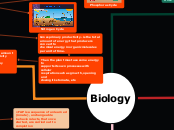Biology
Evolution
"Organisms can not evolve"
This change is due to four different processes; mutation, selection (natural and arificial), gene flow, and genetic drift.
Microevolution
Evolutionary change below the species level; change in the allele frequencies in a population over generations.
As you can see in the picture below, the bugs will end up changing in the second generation!
Source: http://evolution.berkeley.edu/evolibrary/article/evoscales_02

Phylogeny is the study of the evolutionary relationships among a group of organisms
Anagenis (phyletic change) is the accumulation of changes in one specie that leads to speciation over time
Cladogenesis is the budding of one or more new species froma species that continues to exists.
AMONG CLOSELY RELATED SPECIES, a given gene usually evolves at a reasonable rate!
Charles Darwin established that "all species of life have descended over time from common ancestors."
Populations change over time as proven by fossil records.
Microevoultion is change in gene frequency in a population.
Such change might come because:
-The population gained new individuals carrying new genes
-Natural selection favored a particular gene
-Possibly random genetic drift from one generation to the next
-Nonresistant genes mutated into a new resistant version of a gene.
Macroevolution
Evolutionary change above the species level, including the origin of a new group of organisms or a shift in the broad pattern of evolutionary change over a long period of time.
An accumulation of changes which result in speciation
Source: http://www.edu-resource.com/biology/what-is-macroevolution.php

Gene Pool- Sum total of all the genes in a given species
Allelic Frequency- is the percent occurrence for s given allele
Mutation- a change in the nucleotide sequence of an organism’s DNA, ultimately creating genetic diversity. Mutations also can occur in the DNA or RNA of a virus.
Most mutations are deleterious as well a recessive.
Only mutations occurring in gametes affect future generation
Mutations occurring in somatic cells do NOT affect future generations!
Mutations can occur at either the gene or chromosomal level
Taxonomy is the classification of
organisms based on shared
characteristics.
Chromosome fusion, mutations, and gene duplication provide the raw material for evolution
Allopatric Speciation- The formation of new species in populations that are geographically isolated from one another.
The two populations are separated by a geographic barrier...
They will either stay the same species, or will diverge and become two different species, meaning they can no longer breed!
This divergence of the two populations into two species (from Allopatric Speciation) occurred because...
The founder effect took place
Founder effect- Genetic drift that occurs when a few individuals become isolated from a larger population and form a new population whose gene pool composition is not reflective of that of the original population
Sympatric Speciation- The formation of new species in populations that live in the same geographic area.
Cladogenesis- is the budding of
one or more new species from a
species that continues to exists.
Usually, cladogenesis involves
the physical separation of the
group to allow them to evolve
separately.
Anagenesis (phyletic change) is the
accumulation of changes in one
species that leads to speciation over
time.
When certain changes have
accumulated, the ancestral
population can be considered extinct.
A series of such speciation over time
constitutes an evolutionary lineage.
Ecology-
is the scientific study of the interactions between organisms and the environment
Population Ecology
focuses on factors affecting
population size over time
Animal Behavior
Physiological Responses- changing the functioning of the body
Innate Behavior- developmentally fixed, regardless of the environment, and under strong genetic influence
Learned Behavior- is due to cognitive
development, change with experience &
environment
Spatial Learning: the modification of behavior based on experience with the spatial structure of the environment,
including the location of nest sites, hazards, food, and prospective mates
Maturation: behavior due to developing physiological changes
Habituation: loss of responsiveness to stimuli that convey little or no information
Associative Learning- behavior through trial and error
Classical Conditioning
-arbitrary stimulus
-associated with reward or
punishment
-Pavlov’s Experiment
Operant Conditioning
-“trial-and-error learning”
-Associates behavior with
reward or punishment,
-Skinner Box
• FAP is a sequence of unlearned
(innate) , unchangeable
behavioral acts, that once
started, are carried out to
completion
Triggered by a sign stimulus
(external sensory stimulus)
Agonistic behavior- any
social behavior that involves
fighting, thus it is a contest
involving threats.
Cooperative behavior-
when an animal invests
resources in a common
interest shared by other
group members
Altruism is defined as
behavior that might
decrease individual
fitness, but increase the
fitness of others.
Threats
Aggression
Submission
Territorial animals defend areas that contain a nest, den or mating site and sufficient food resources for themselves and their young.
Ecosystem Ecology emphasizes energy flow and chemical cycling among the various biotic and abiotic components
Gross primary productivity- is the total
amount of energy that producers convert to
chemical energy in organic molecules per unit of time.
Then the plant must use some energy to
supports its own processes with cellular
respiration such as growth, opening and
closing it’s stomata, etc.
What is left over in that same amount of time is net primary productivity which is the
energy available to be used by another
organism.
Community Ecology- Populations are linked by interspecific interactions that impact the survival & reproduction of the species involved
Community−an assemblage of populations living close enough together for potential interaction
Dominant Species−most abundant, highest biomass, powerful control over occurrence and distribution of other species
Keystone Species−NOT necessarily most abundant, exert strong control due to their ecological roles or niches
Richness = number of species & abundance
A keystone species is one that has a strong effect on the composition of the community
Removal of keystone species causes a decrease in species richness
Example: Sea otters eat sea urchins which are fierce competitors having a diet of kelp
Communities with higher diversity are...
More productive and more stable regarding their productivity
More resistant to invasive species, organisms that become established outside their native range
Individualistic Hypothesis − a chance group of species is linked & distributed according to its tolerance ranges for abiotic factors
Interactive hypothesis - states that the community is an integrated unit comprised of closely-related species associating with each other due to biotic interactions.
Factors That Impact Communities
1. Disease
2. Interspecific Interactions
Competition
Predation
Symbiosis
Mutualism
Commensalism
Defense Mechanisms

Cryptic- camouflage

Aposematic- warning

Batesian-palatable/ harmless species mimics an unpalatable/ harmful model

Mullerian-Two or more unpalatable, aposematically colored species resemble each other
Cellular Processes
Biochemistry
the branch of science concerned with the chemical and physicochemical processes that occur within living organisms.
Element- a substance that cannot be broken down into other substances by chemical reactions
There are 92 naturally occurring elements
About 20–25% of the 92 elements are essential to life
Carbon, hydrogen, oxygen, and nitrogen make up 96% of living matter
Most of the remaining 4% consists of phosphorus, calcium, sulfur, and potassium!
Living organisms consist mostly of carbon-based compounds
Hydrocarbons are organic molecules consisting of only carbon and hydrogen
Many organic molecules, such as fats, have
hydrocarbon components
Trace elements are those required by an organism in minute quantities
An atom is the smallest unit of matter that still retains the properties of an element. Atoms are composed of subatomic particles
Protons (positive charge)
Electrons (negative charge)
Neutrons (no electrical charge)
Isotopes are two atoms of an element that differ in number of neutrons
Radioactive isotopes decay spontaneously, giving off particles and energy
An element’s atomic number is the number of protons in its nucleus
An element’s mass number is the sum of protons + neutrons in the nucleus
Energy is the capacity to cause change, perhaps by doing work
Potential energy is the energy that matter has because of its location or structure
An electron’s state of potential energy is called its energy level, or electron shell
Valence electrons are those in the outermost energy level (or sublevel)
The chemical behavior of an atom is mostly determined by the valence electrons
A covalent bond is the sharing of a pair of valence electrons by two atoms
In a covalent bond, the shared electrons count as part of each atom’s valence shell
1 pair: a single bond
2 pairs: a double bond
3 pairs: a triple bond
Electronegativity is an atom’s attraction for the electrons in a covalent bond
In a nonpolar covalent bond, the atoms share the electron equally
Unequal sharing of electrons causes a partial positive or negative charge for each atom or molecule
In a polar covalent bond, one atom is more electronegative, and the atoms do not share the electron equally
An orbital is the three-dimensional space where an electron is found 90% of the time.
Each electron energy level consists of a specific number of orbitals
Water is the biological
medium for all life on
Earth. All living organisms
require water more
than any other substance
Cohesion is when water
molecules stick to each
other
Adhesion is when water
molecules stick to some
other type of substance
like plant cell walls.
A solution is a liquid that is a homogeneous
mixture of substances
A solvent is the dissolving agent of a solution
An aqueous solution is one in which water is the solvent
The solute is the substance that is dissolved or “disolvee”
A hydrophilic substance is one that has an
affinity for water
A hydrophobic substance is one that does
not have an affinity for water
A base is any substance that
reduces the H+ concentration
of a solution
An acid is any substance that
increases the H+
concentration of a solution
Cells
Cell Theory
The cell is the basic unit of life
All living things are composed of
cells
Cells only come from preexisting
cells.
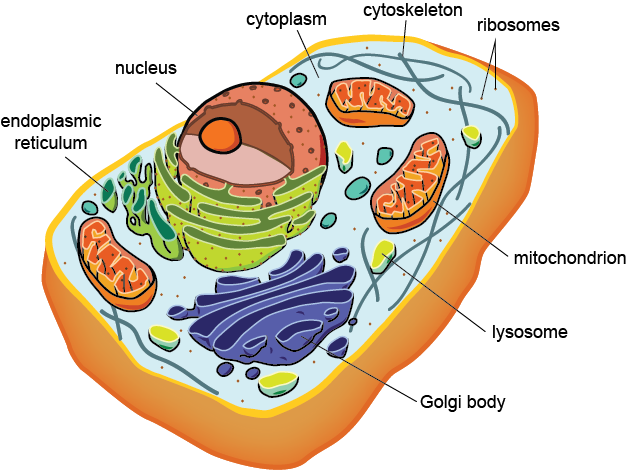
Eukaryotic: Cells with a nucleus and
membrane bound organelles (larger more
evolved)
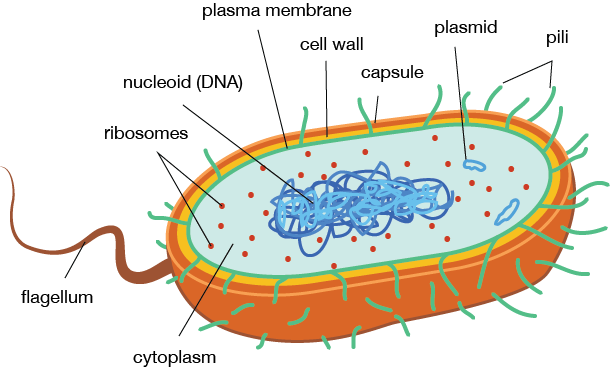
Prokaryotic: Cells without a nucleus or
membrane bound organelles
Prokaryotes were the first
cells to evolve.
All cells have plasma membranes and many of their organelles also have membranes. All membranes are made from a bilayer of phospholipids.
Membranes are more fluid when they contain more unsaturated fatty acids within their phospholipids. More unsaturated fatty acids result in increased distance between the lipids making the layer more
fluid.
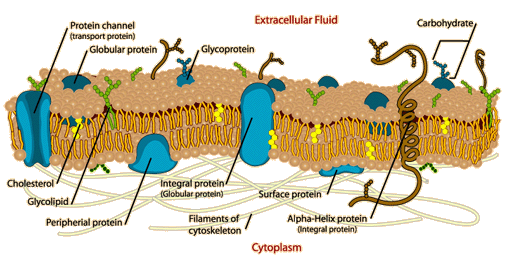
The cell membrane is said to be semi‐permeable or selectively permeable because certain molecules can cross
the membrane and others cannot. The membrane is said to be permeable to those that can cross and impermeable to molecules that cannot cross

Passive Diffusion

Facilitated Diffusion

Active Transport

Osmosis

Plasmolysis
Transduction - This
occurs after the reception, the cell needs to process the signal. The biochemical pathway or transduction pathway quite often results in a cascading effect which amplifies each product.
Photosynthesis
is the process by which photoautotrophs convert the energy in sunlight into the energy storied in organic compounds

Leaves have a LOT of surface area to facilitate absorption of sunlight.

The energy captured through photosynthesis forms the basis of the ecological pyramid.
In eukaryotes, photosynthesis takes place
inside chloroplasts inside cells, which happen in the leaves. Chloroplasts have 3 membranes
Inner membrane
Outer membrane
Thylakoid membrane
Chlorophyll and other pigments involved in photosynthesis are embedded in the thylakoid membrane.

The net overall equation for photosynthesis is
Photosynthesis occurs in 2 stages
The Light Reactions
The Calvin Cycle
C3 plants, which are 'normal' plants, perform the light reactions and the Calvin Cycle in the mesophyll cells of the leaves
C4 plants use the Hatch‐Slack
pathway prior to the Calvin Cycle
In CAM photosynthesis, plants open their stomata at night to obtain CO2 and release O2, opposite to C4 plants, who did it during the day
Both C4 and CAM plants – which are primarily found in hot, dry climates – have evolutionary adaptations which help prevent photorespiration.
Genetics
the study of heredity and the variation of inherited characteristics.
Genetic Disorders.
Certain human genetic disorders can be attributed to the inheritance of single gene traits or specific chromosomal changes, such as nondisjunction. Tay-Sachs disease, Sickle cell anemia, Huntington’s disease, X-linked color blindness, Trisomy 21/Down syndrome, and Klinefelter’s syndrome
Some traits are determined by genes
on sex chromosomes. Sex-linked genes on sex chromosome. In mammals and flies, the Y chromosome is very small and carries few genes
Traits carried on the sex chromosomes are said to be sex linked.
In humans, most sex-linked traits are carried on the X chromosome.
Sex-linked traits in humans are expressed more often in males than females
Huntington’s disease - a hereditary disease marked by degeneration of the brain cells and causing chorea and progressive dementia.
Mendel and the Gene
The pattern of inheritance (monohybrid,
dihybrid, sex-linked, and genes linked on the same homologous chromosome) can often be predicted from data that gives the parent genotype/ phenotype and/or the offspring phenotypes/genotypes.
Law of Dominance: if the two alleles at a
locus differ, then one (the dominant allele)
determines the organism’s appearance, and
the other (the recessive allele) has no
noticeable effect on appearance
Human Traits with simple dominance
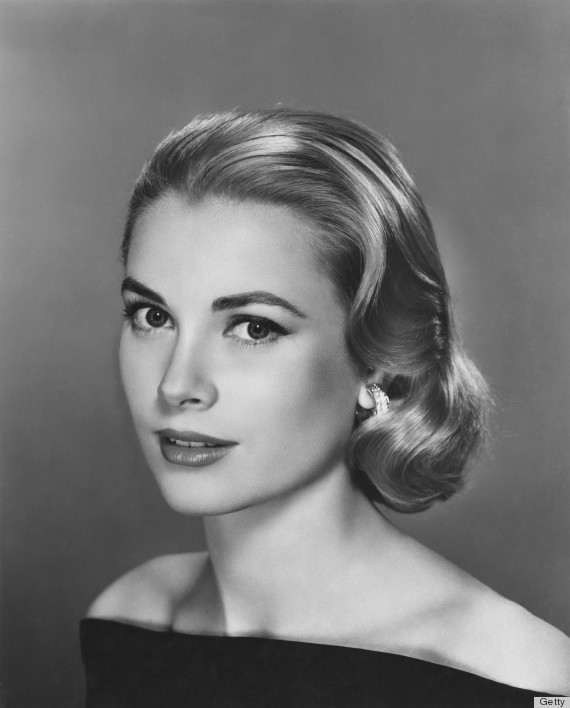
Widows Peak

Freckles

Detached Earlobes
Dominant alleles are
not necessarily more
common in populations
than recessive alleles

Law of segregation: the two alleles for a
heritable character separate during gamete formation and end up in different gametes
The Law of independent assortment states that the alleles of two (or more) different genes get sorted into gametes independently of one another
The multiplication rule states that the
probability that two or more independent events will occur together is the product of their individual probabilities
Degrees of Dominance
Complete dominance occurs when
phenotypes of the heterozygote and
dominant homozygote are identical
In codominance, two dominant alleles
affect the phenotype in separate, distinguishable ways
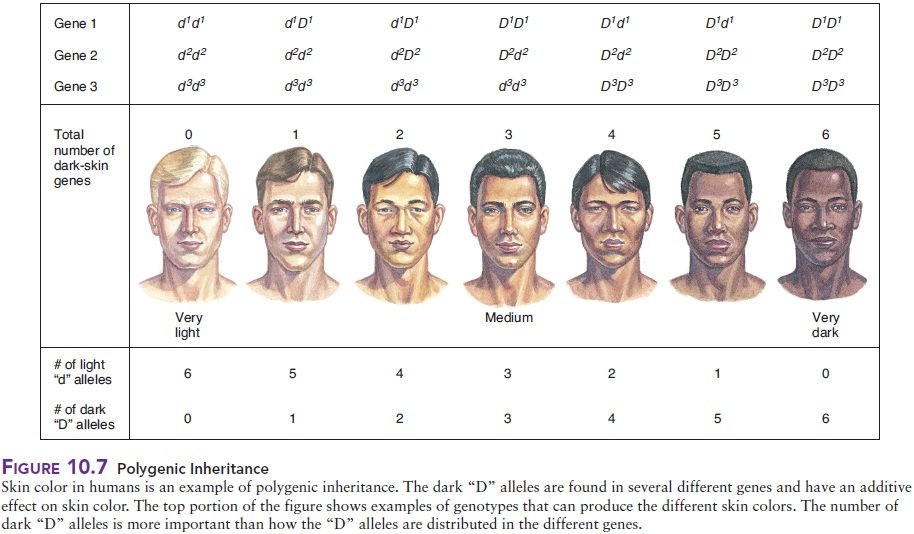
Polygenic Inheritance, when one gene has multiple effects on the physiology of an organism
Epistasis, when two or more genes control the expression of a single trait
Most organisms do not sexually reproduce
Budding Hydra
Sprouting Redwood
Parthenogetic Rotifer
Fundamentally all sexual reproduction involves the same cellular processes (fertilization)
Different species have different number of chromosomes
Prophase 1: "Crossing Over" Homologous pairs physically connect to each other, forming structures called 'tetrads'
Metaphase 1: Homologous Pairs of Chromosomes line up at the Metaphase plate still attached to each other. No DNA REPLICATION.
Prophase II. Meiosis II begins without any further replication of the chromosomes. In prophase II, the nuclear envelope breaks down and the spindle apparatus forms
Metaphase II. The chromosomes become arranged on the metaphase plate, much as the chromosomes do in mitosis, and are attached to the now fully formed spindle.
DNA
Prokaryotic chromosome attaches itself to the plasma membrane
DNA polymerase must always attach the complementary nucleotide
Proteins are always found in the
"workhorse" molecule.
One gene produces an enzyme
Amino Acids = Building Blocks for Protein
DNA is located in the nucleus.
DNA -> RNA
RNA -> PROTEIN
TRANSCRIPTION -> TRANSLATION
Types of RNA
mRNA
tRNA
rRNA
Prokaryotes do not have introns like eukaryotes
RNA in prokaryotes do not have to be processed like eukaryotes
Translation:
Ribosomes are made from proteins and rRNA
The parts to translation:
Initiation
Elongation
Termination
Biotechnology
What is the relationship between science and technology?
Bacteria = no immune system, chops up restriction enzyme
They recognize "palindromic DNA sequences"
They either cut in the middle of the sequence (blunt cuts) or produce a 5' overhand of a few bases (sticky ends)
Restriction Endonucleases
An origin of replication
A region controlling many restriction sites
A genel genes that enable screening of cell that have sucessfully taken up the plasmid (usually ampicilin resistance)
Electrophoresis
A way to separate fragments of DNA based on their size

THIS PHOTO IS BOLOGNA!
This is not proper EVOLUTION!
Source:
http://futurism.com/the-next-stage-of-evolution-how-will-the-human-species-evolve/
The two populations experienced different sexual selection.
Domain
Kingdom
Phylum
Class
Order
Family
Genus
Species
Population- a group of individuals of the same species living in an area
Populations disperse in a variety of a ways that are influenced by environmental and social factors
Natural range expansions show the influence of dispersal on distribution
In rare cases, longdistance
dispersal can lead to adaptive
radiation
Distribution Patterns
Uniform distribution- results from intense competition or antagonism between individuals
Random Distribution- occurs when there is no competition, antagonism, or tendency to aggreate
Clumping- the most common distribution because environmental conditions are seldom to uniform
Morphological Responses- changing the anatomy of the body
Behavioral Responses- changing behavior to adapt to change
Imprinting is a type of behavior that
includes both learning and innate components and is irreversible. Limited phase early in an animal’s development, is the only time certain behaviors can be learned
Auditory Communication (vocalization)
Drosophila males produce a characteristic “song” by beating their wings

Biogeochemical Cycle

Nitrogen Cycle
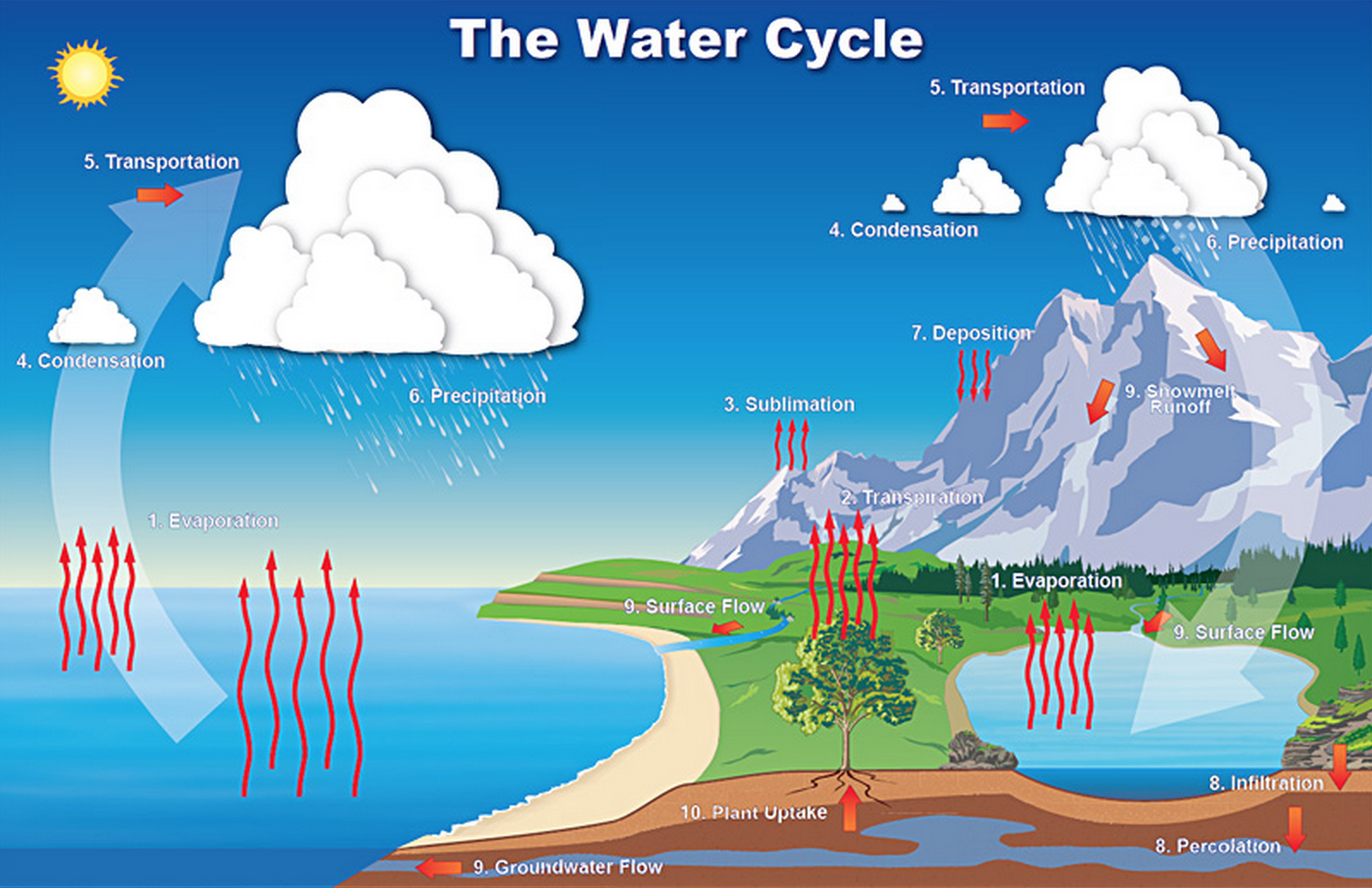
Water Cycle

Phosphorus Cycle
Cycles

Carbon Cycle
Compound- consists of 2 of more different elements combined into a fixed ration
A compound has characteristics different from its element
Organic chemistry
With four valence electrons, carbon
can form four covalent bonds with a
variety of atoms
Isomers are compounds with the same molecular formula but different structures,
thus different properties.
Enantiomers are isomers that are mirror images of each other & rotate light differently
Structural isomers have different covalent
arrangements of their atoms
Cis-trans isomers have the same covalent bonds but differ in spatial arrangements
Functional groups are the components of
organic molecules that are most commonly
involved in chemical reactions. The number and arrangement of functional groups give each molecule its unique properties
Adenosine triphosphate, is the primary energy-transferring molecule in
the cell
